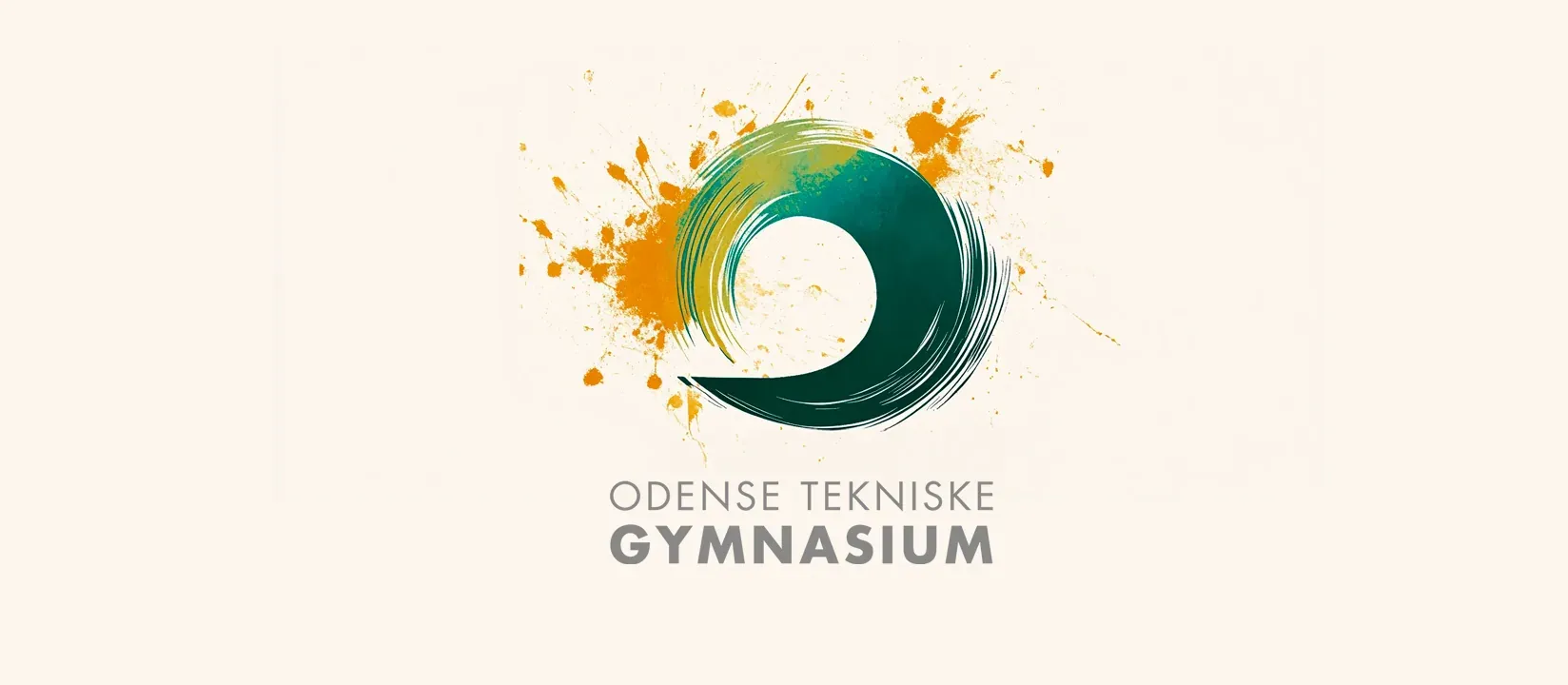As part of teaching the subject Communication and IT at Odense Technical High School, I constantly try to adapt my teaching to my students while experimenting with generative artificial intelligence (AI). However, instead of viewing AI as an all-encompassing solution that can take over my teaching, I focus on developing AI learning objects.
These AI learning objects are small AI-based learning resources focusing on a minor part of the teaching. For example, it could be a resource that gives students individual constraints in a creative process or provides feedback on students' work based on predefined criteria. The point is that these parts of teaching don't replace the instructor but rather function as objects that can enrich and make specific parts of the learning more efficient.
By working with AI in this way, I, as a teacher, maintain control over the overall learning design. I decide when and how AI should be used, and I can continuously evaluate and adjust their role concerning teaching. At the same time, it allows me to experiment with the technology in a controlled way and build experience with how AI can be used in teaching.
This approach differs significantly from the notion that AI should be able to answer everything and be used in all facets of teaching. Instead, I believe that AI's strength lies in supporting and enhancing selected aspects of learning and that I, as the teacher, should always control the technology.
AI Learning Object for Logo Design Work
For my first-year students in Communication and IT, I developed two small AI learning objects as part of a short course in logo design. In this course, students worked with logo design and ultimately redesigned the school's logo. The idea was to start analogously by drawing multiple logos based on the ARMM model and then work with vector graphics in Affinity Designer. Although the course is short, with six modules, it still contains much of the core material from the subject.
Here are some of the students' sketches, which they drew continuously during the review of the ARMM model:
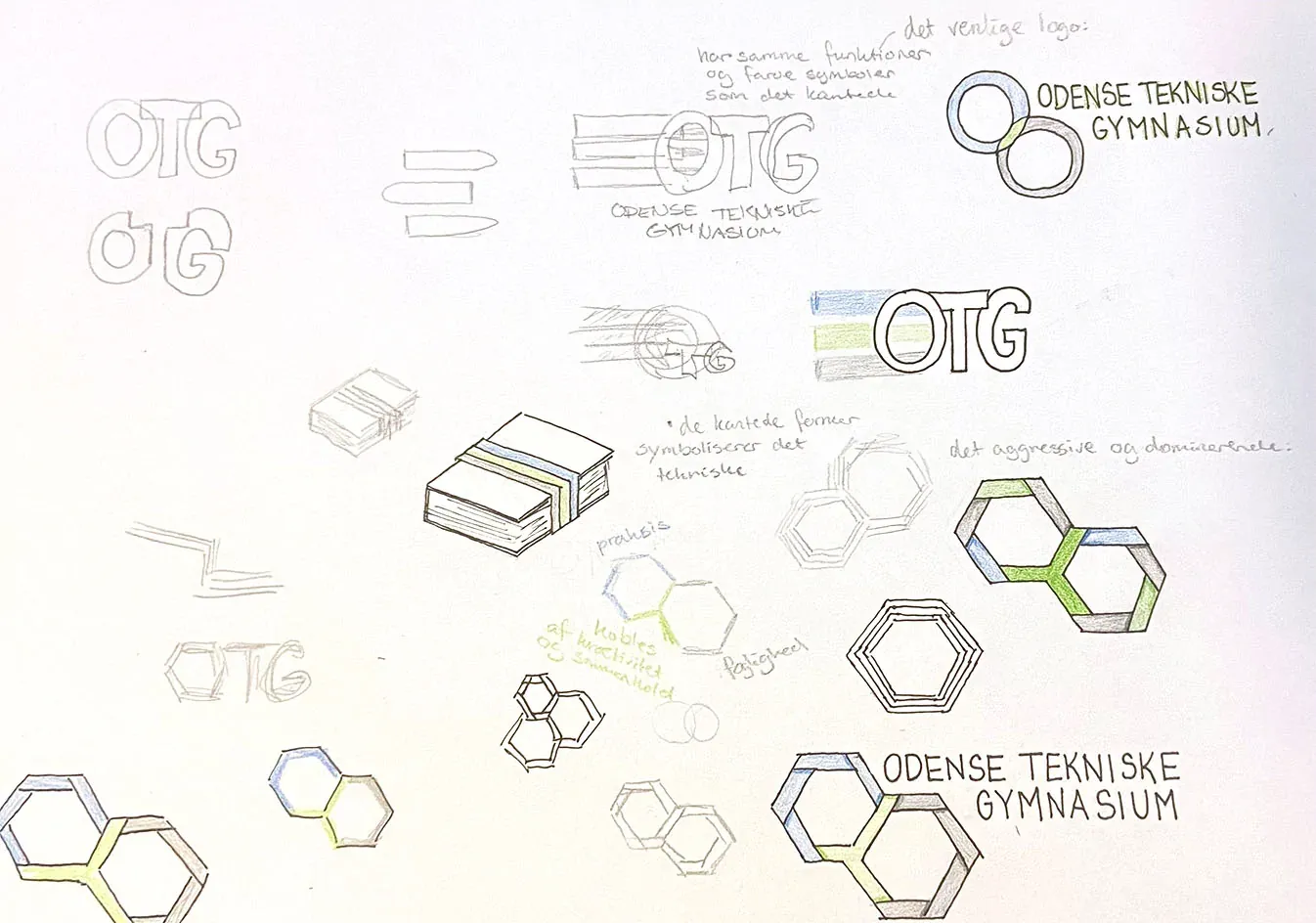
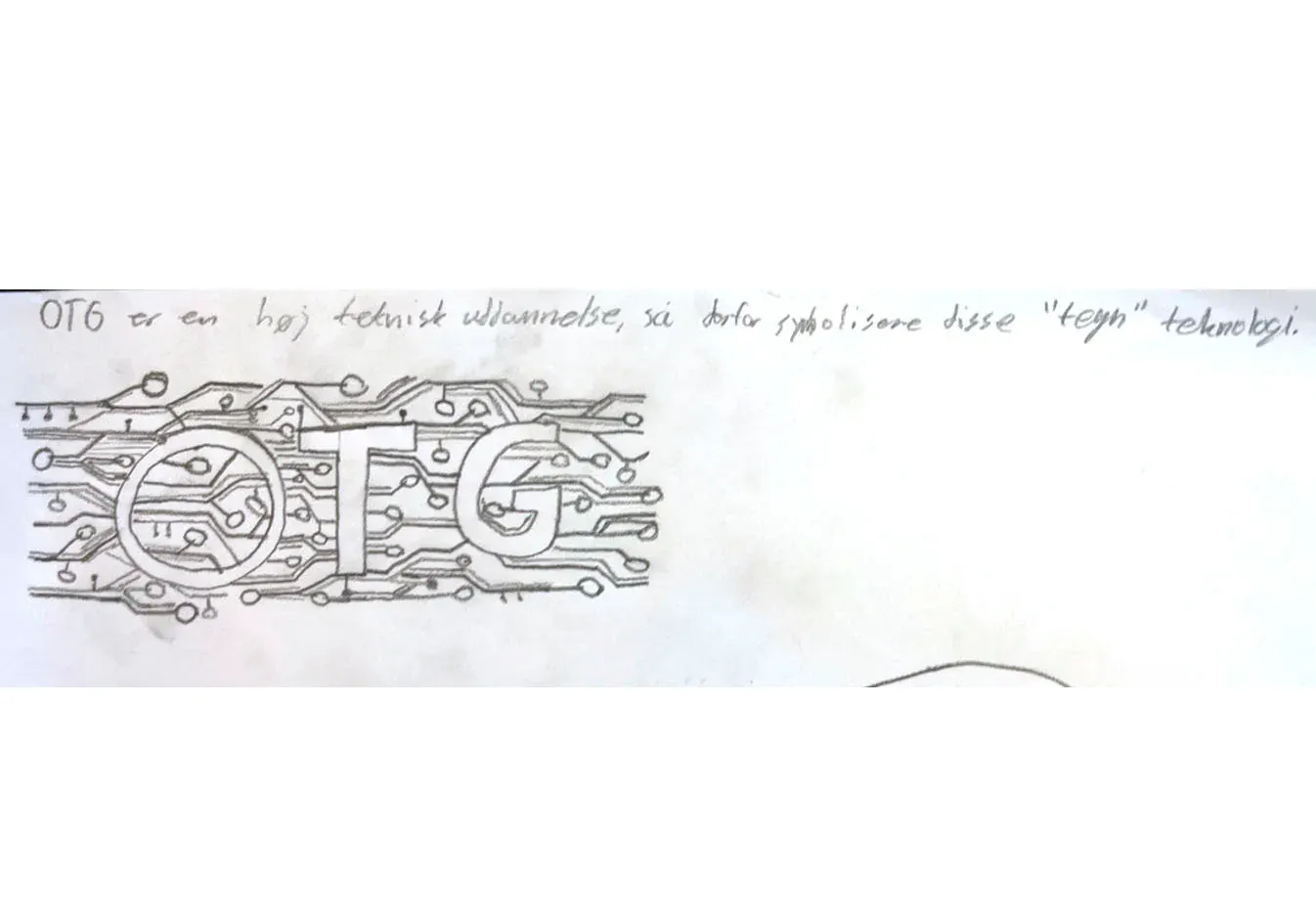
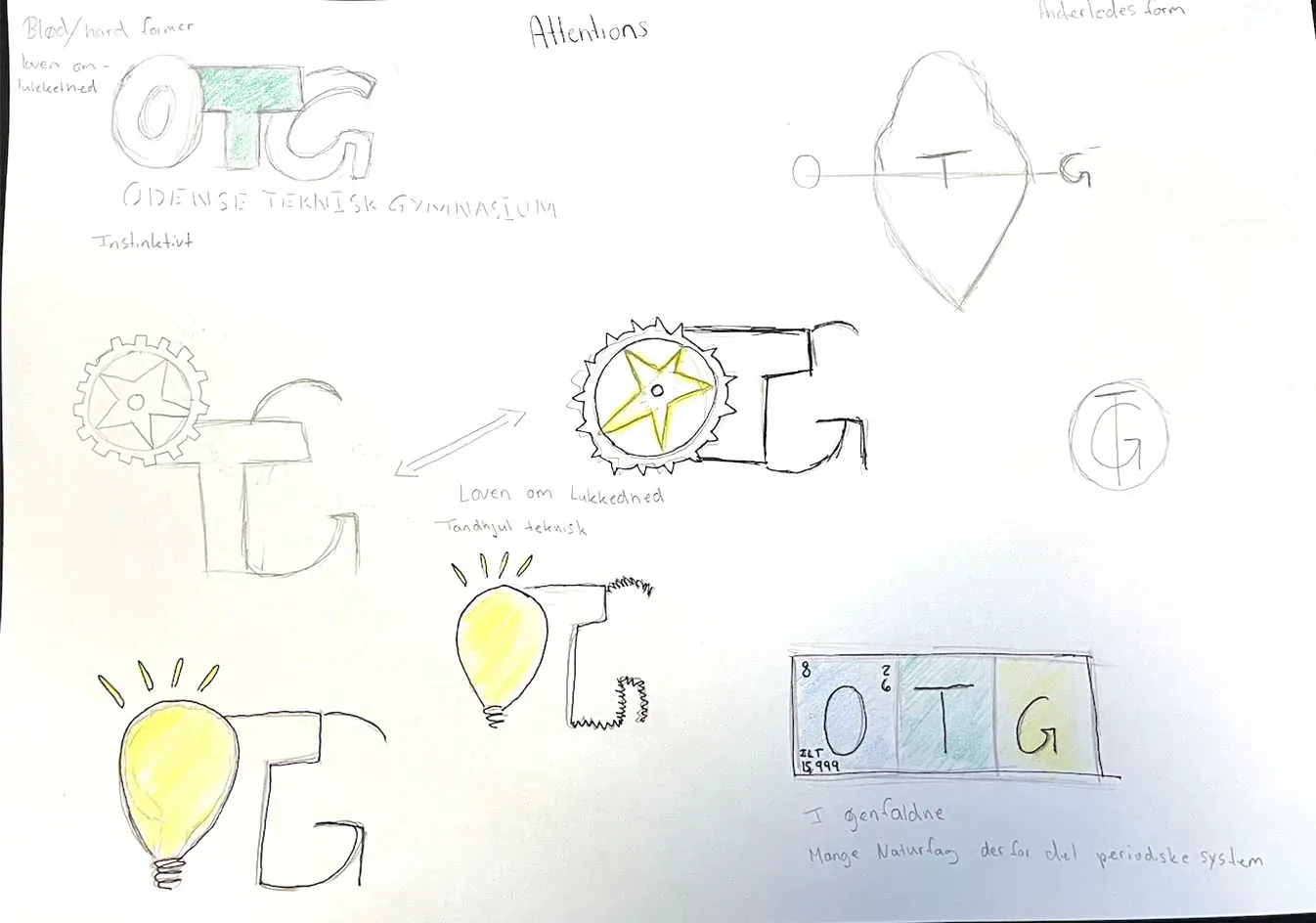
First Learning Object
After drawing many sketches for a new logo for Odense Technical High School, the goal was to challenge students when they had to design a new version in Affinity Designer. To this end, I developed a series of card categories that would challenge the students and act as creative constraints. Thus, the goal was also for students to look at their sketches, use them as inspiration, and become more challenged.
The first AI learning object was a small program that could give students a set of requirements for the logo they needed to develop. For example, a student might receive the logo assignment with the following constraints:
- Style or aesthetic: Nature-inspired
- Color scheme: Warm colors
- Element or motif: Gear
- Typography: Serif
- Form or layout: Circle
This also meant that each student had specific requirements for solving the assignment. This object was created using Claude and developed as an HTML webpage that could be integrated directly into the school's Moodle platform.
This part could be done manually with cards without showing anything on the board. Alternatively, several websites offer such drawings. In class, we briefly discussed each student's task and the meaning of the individual categories by putting them on the screen. At the same time, we practiced using graphic design terminology.
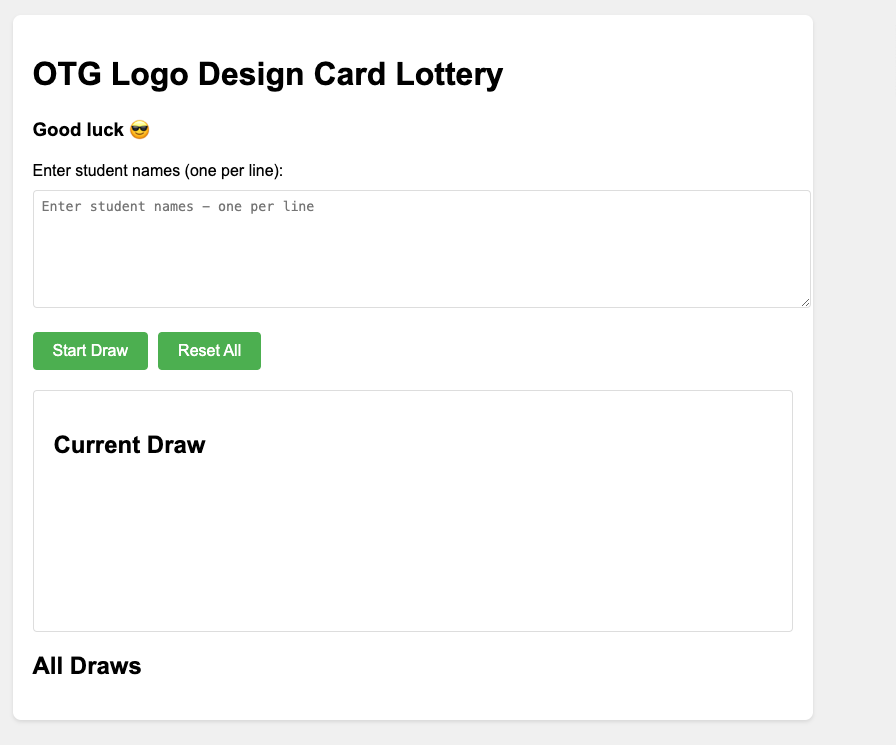
After receiving their card categories, students were given the task of developing a new logo with the following requirements:
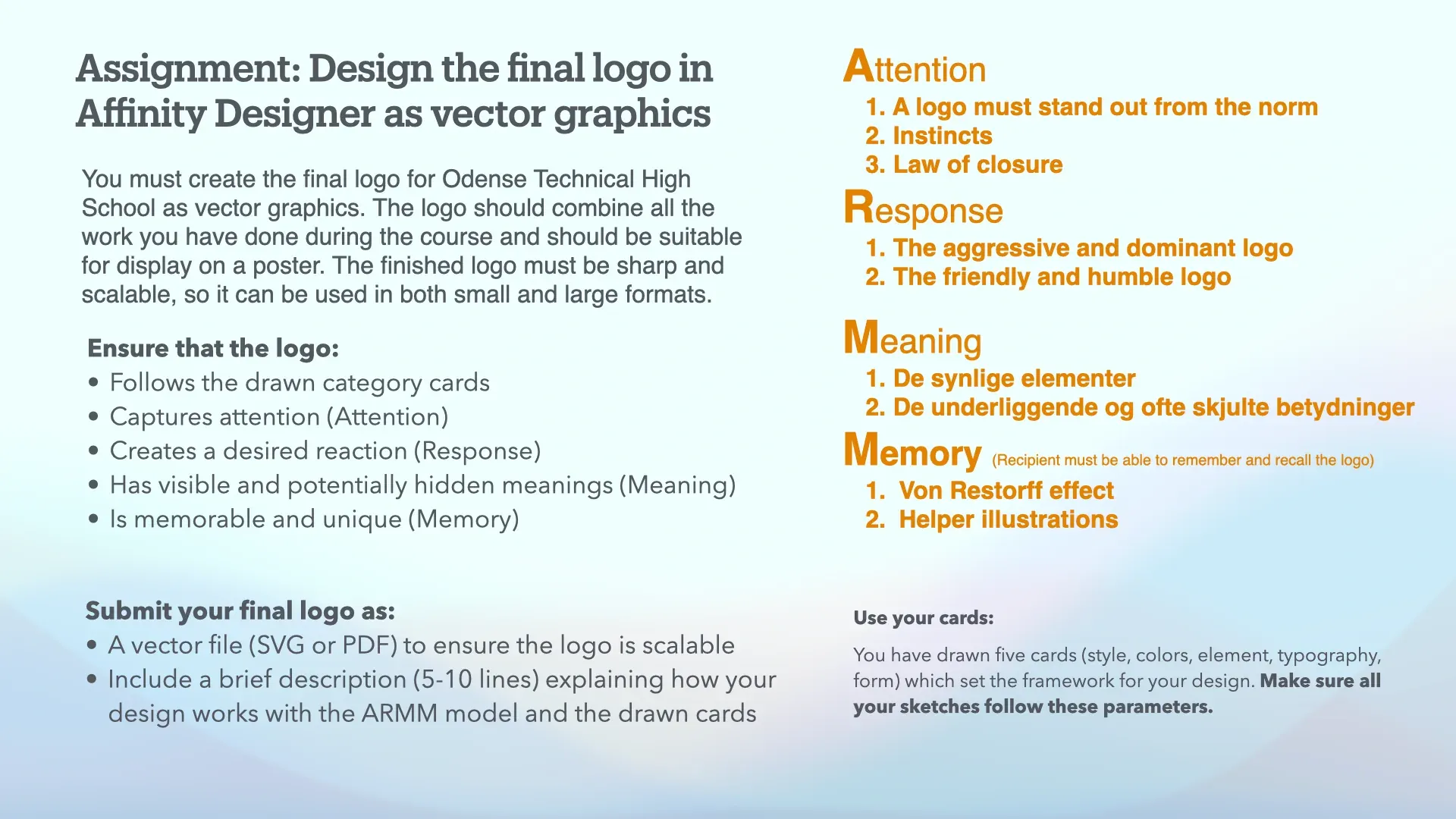
The students spent one module creating the first version of their logo in Affinity, where I explored the possibilities of working with shapes in the program. After this module, they submitted the first partial submission of their logo.
The challenge now is that the students naturally need feedback on their productions, but it's also a demanding process with 30 logos. This is where AI learning object #2 comes into play.
Second AI Learning Object
In preparation for the 4th module in the logo course, I developed another AI learning object that could provide formative feedback on students' logos. Unlike the first AI learning object, I wanted to create something that could be used in teaching and function as an "assistant teacher."
In class, I introduced the website to the students. When they got stuck or needed professional input, they uploaded a version of their logo and the card categories they had received to the site. Thus, my pre-prompt examined their logo and highlighted two positive elements (if it found any) and three areas that could be improved. Additionally, I asked it to give a slightly humorous comment to the student based on the analysis.
The technical setup is developed so the students' images and prompts stay in the high school's Mac Studio. The layout is sketched below.

Here are two examples of the logos the students developed. However, they still need one or two more iterations, so we'll continue working on them. We must also examine how the logo looks when printed in context.


Effect in Teaching
Students responded well to this AI learning object, uploaded their logos, and received feedback. The following is the result of my observations from teaching, where I continuously took notes while talking with students. This should be taken as knowledge sharing rather than a scientifically valid study.
I have chosen to divide their reactions into three groups:
- Students who received helpful feedback and independently continued working on their logo.
- Students whose logo was misunderstood by the program and received strange feedback.
- Students who deliberately challenged the program and enjoyed sabotaging the system.
Looking deeper into these three groups, it was interesting how the students who received helpful feedback were self-directed and often prompted. This also meant they received professional input on their production, which can otherwise be difficult with 30 students in a class. At the same time, there were also many questions from several of these students who wanted explanations for some of the feedback they received from the AI learning object. They were thus still seeking my expertise when there were words or concepts they didn't understand, and some sought my confirmation of the program's feedback.
The students whose logos were misunderstood by the system were prompted several times until they received something valuable. They laughed at the program's responses but still reflected on them regarding their logo. I heard several reading the program's output aloud, and together with their neighbors, they discussed what might have gone wrong.
The last group was interesting, as they focused more on testing the program and trying to overcome its limitations. I particularly noticed their straightforward language—like everything was free and without boundaries. Introducing an AI tool somehow created unrest among some students, disrupting education.
Overall, my experience was that most students fell into the first and second groups, while very few were in the last one. However, this group is still one to be aware of when introducing technology in teaching. I suspect this group would also have written funny messages in a Padlet or added color to the learning in other ways.
Summary of the Experiment
It was interesting how I could shift some of my guidance to the second AI learning object, as this allowed me to be present for the students.
One experience I'm also taking with me is that you can't develop 100% closed tools. I learned this in the final assignment, where students had to submit their logo and 5-10 lines of argumentation to use the ARMM model and their card categories. But before I knew it, a student had put the assignment and logo into my LogoBot and asked it to solve the task. It was an acceptable solution until I adjusted my pre-prompt and removed that possibility.
Another thing I'll take from the experiment is that I'm delegating some of the expertise to my LogoBot. I don't always have an overview of what misunderstandings arise when students use it. Ultimately, I give students feedback on their submissions regardless of what my AI learning object has told them. It's also important to instruct students that the feedback they get from LogoBot shouldn't be taken as the ultimate truth.
The AI learning objects also contribute a new form of interactivity and dialogue in teaching. Students can actively experiment with AI tools and get immediate responses, which can increase their curiosity and engagement. This form of "play" with technology can create a more informal and explorative learning situation that supplements teacher-led instruction. At the same time, the AI objects function as a form of scaffolding that supports student learning. When the LogoBot gives feedback and makes suggestions for improvements, it guides students further in their logo design process in a way I wouldn't always have time for as a teacher.
In the future, I will develop more small AI learning objects, like LogoBot, that can provide different feedback depending on where students are. They don't need to be large systems but small aids that can give students the challenge or support they need.
How to Get Started?
Please don't be nervous about things going wrong because something will go wrong when we work with AI. However, the above experiment has added much more to the teaching than if I guided them individually. I don't want to release control of the teaching space to AI, but I choose when it makes sense.
